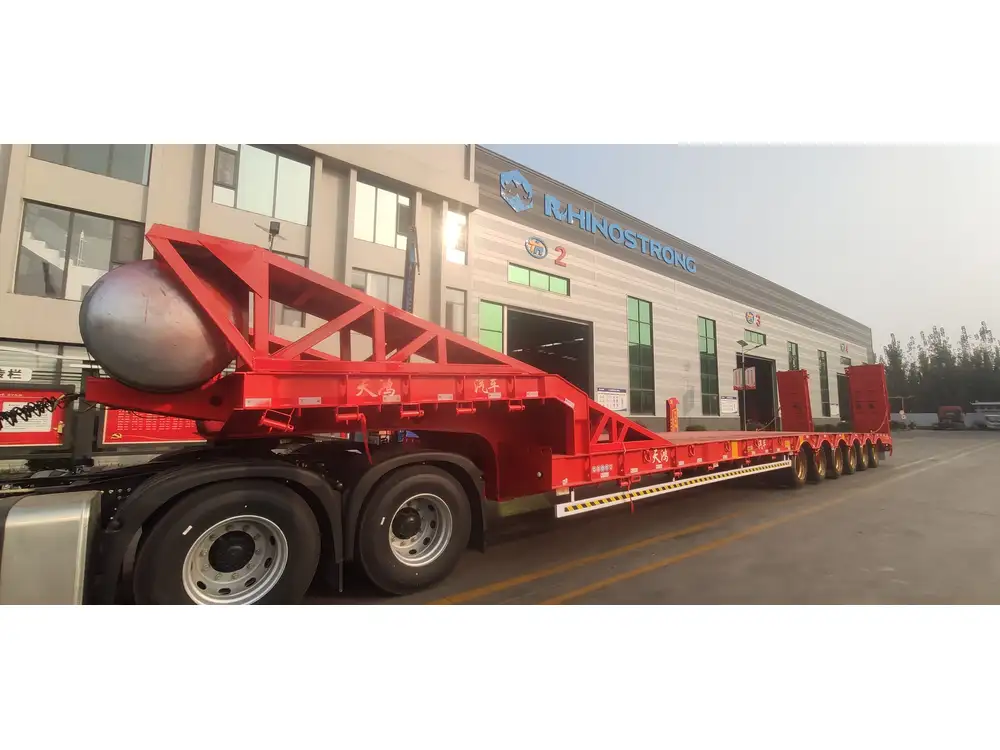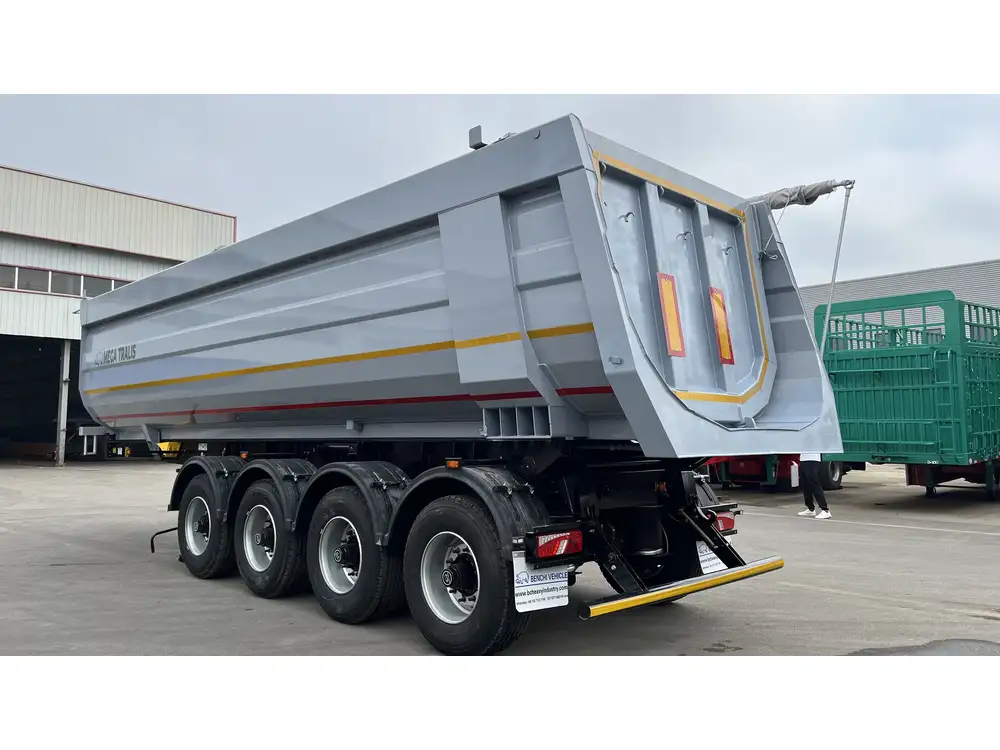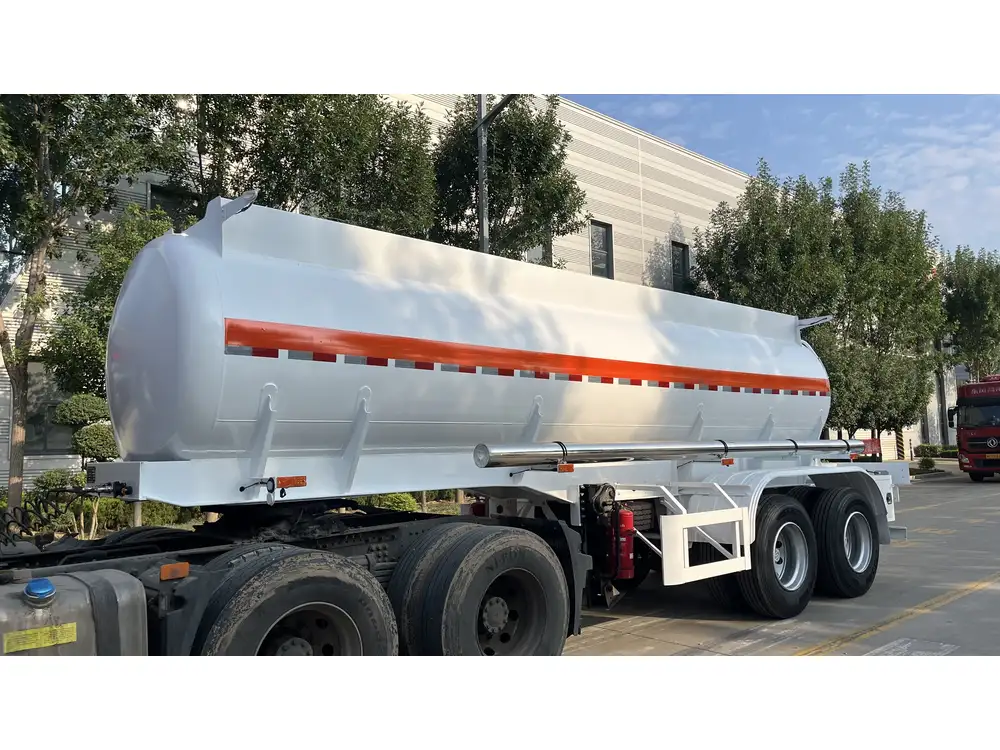Introduction to Trailer Side Tippers
In the growing world of logistics and transportation, trailer side tippers have emerged as indispensable assets for various industries, including construction, mining, and agriculture. Designed for optimal efficiency, these trailers facilitate the loading and unloading of bulk materials such as sand, gravel, and soil. This comprehensive guide highlights the key features, benefits, and best practices of employing trailer side tippers, offering insights for manufacturers and users alike.
Understanding the Structure of Trailer Side Tippers

Key Components and Specifications
Trailer side tippers are engineered to provide unmatched functionality. Understanding their structural design is crucial for making informed purchasing decisions. Below are the primary components of a trailer side tipper:
| Component | Description |
|---|---|
| Chassis | The backbone that supports the weight and stability of the trailer. Typically made from high-strength steel to enhance durability. |
| Tipping Body | The container where bulk materials are stored. Side tippers often have dual-discharge capabilities for greater versatility. |
| Hydraulic System | Comprising cylinders and pumps, this system enables the tipping process, offering smooth and controlled operations. |
| Suspension System | Essential for comfort and stability during transportation, this system absorbs shocks from uneven terrains. |
| Wheels & Axles | Designed to support heavy loads, ensuring stability and maneuverability. |
Capacity Considerations
When selecting a side tipper, the payload capacity is paramount. Most trailer side tippers can generally carry between 20 and 40 tons, depending on the design and materials used. It is essential to consider road regulations and load limits in your area to ensure compliance.
Advantages of Using Trailer Side Tippers

Efficient Loading and Unloading
The standout feature of trailer side tippers is their elevated unloading capability. Transitioning from traditional rear-tipping trailers, side tippers streamline the unloading process by shifting materials to the side.
- Speed: The hydraulic mechanism allows for quick unloading, reducing time spent at job sites and improving overall productivity.
- Control: The operation provides extensive control over material discharge, minimizing spillage and waste.
Versatility Across Industries
These trailers are adaptable and can cater to various industry needs:
- Construction: Ideal for transporting aggregates, asphalt, and other materials, trailer side tippers can navigate rough terrains and deliver loads directly to site locations.
- Mining: Commonly used to transport mined materials, their robust construction withstands harsh conditions and heavy payloads.
- Agriculture: Farmers utilize side tippers for effectively managing grain, hay, and other agricultural products, easing storage and distribution processes.
Cost-Effectiveness
Utilizing trailer side tippers can translate into substantial savings:
- Labor Reduction: Less manual handling is required, minimizing labor costs and reducing workplace injuries.
- Fuel Efficiency: With optimal aerodynamics and weight distribution, these trailers can help enhance fuel efficiency, leading to lower operating costs.

Maintenance Tips for Trailer Side Tippers
To ensure longevity and reliable performance, regular maintenance of trailer side tippers is essential. Below are key pointers:
Hydraulics Inspection
- Fluid Levels and Contamination: Regularly check hydraulic fluid levels and look for contaminants to prevent system failures.
- Leakage Checks: Inspect hoses and connections for any signs of wear or leaks. Addressing these promptly can mitigate costly repairs.
Structural Integrity
- Chassis and Body Examination: Conduct periodic checks for structural damages, such as cracks or rust, especially after heavy use.
- Paint and Coating: Ensure that protective coatings are intact, preventing corrosion and extending the trailer’s life.

Tire Maintenance
- Tread Depth: Monitor tire conditions to maintain safety and enhance fuel efficiency.
- Alignment: Regularly check wheel alignment to prevent abnormal tire wear and improve maneuverability.
Choosing the Right Trailer Side Tipper
Factors to Consider
When investing in a trailer side tipper, several critical factors should influence your decision:
- Load Capacity: Align your choice with the maximum loads you anticipate transporting.
- Material Construction: Opt for trailers constructed from high-strength materials designed for durability and resistance to wear and tear.
- Hydraulic System Specs: Identify the efficiency and reliability of the hydraulic system; the faster and more reliable it is, the more effective your unloading will be.

Customization and Features
Standard vs. Customized Models
While standard models cater to general needs, customized side tippers can offer specific advantages tailored to unique requirements.
Comparison of Standard vs. Customized Side Tippers:
| Feature | Standard Models | Customized Models |
|---|---|---|
| Cost | Generally more affordable | Higher investment but tailored fit |
| Flexibility of Use | Limited versatility | Increased functionality based on demand |
| Lead Time for Acquisition | Quick delivery | Longer lead time for manufacturing |
| Material Options | Limited to standard materials | Wide range catering to specific needs |
Innovative Technologies in Trailer Side Tippers

Incorporating Tech for Enhanced Performance
In an age where technology drives efficiency, smart features embedded in trailer side tippers are paving new paths for operational excellence:
- Telematics Systems: Real-time monitoring of trailer performance metrics offers data-driven insights for maintenance and operational analytics.
- Automated Unloading: Advanced hydraulic systems allow for remote-controlled unloading, reducing operator errors and improving safety.
Challenges Faced by Users of Trailer Side Tippers
Common Issues and Their Solutions
While trailer side tippers are efficient tools, users may encounter challenges. Addressing these proactively is key to ensuring smooth operations.
| Challenge | Solutions |
|---|---|
| Hydraulic System Failures | Regular inspections and timely replacements |
| Overloading Risks | Training operators on load capacities |
| Wear and Tear of Tires | Routine maintenance checks and replacements |

User Training and Skills Development
Equipping operators with the necessary skills and knowledge can mitigate operational risks. Training programs should pivot on:
- Safe operational techniques
- Regular maintenance practices
- Emergency protocols for hydraulic and structural failures
Conclusion: Maximizing Your Investment in Trailer Side Tippers
Investing in trailer side tippers offers a pathway to increased efficiency, cost savings, and adaptability across various industries. By understanding their structural components, advantages, and maintenance needs, stakeholders can fully harness the potential of these trailers. Furthermore, considering innovative technologies and ensuring operator training positions companies to stay competitive in a fast-evolving market.
Call to Action
If you’re ready to enhance your operational capabilities with trailer side tippers, we invite you to explore our extensive range of products designed to meet and exceed industry standards. Contact us today to discuss your requirements and find the perfect solution tailored to your needs.



